When it comes to birds, owls are big attention-getters, with their huge eyes, razor-sharp beak, and powerful feet with piercing talons. Their haunting calls echoing through the dark give us chills. Owls are also symbols of wisdom, making them popular characters in ancient myths and modern stories.
Owls are categorized as raptors, or birds of prey. They are predators, and the animals they catch and feed on are prey. In other words, they’re hunters. Their diets range from insects and worms to small mammals, reptiles, fish, crustaceans, and even other birds. Like other raptors—eagles, hawks, falcons, kites—owls grab their prey with their feet. Their hunting skills are enhanced by their keen eyesight, excellent hearing, and special feathers on the edges of their wings for flying silently after unsuspecting prey.
Owls are birds of prey. That means they hunt and eat other animals. Eagles, hawks, and falcons belong to that group too. But unlike most other birds of prey, most owls are nocturnal—they are active at night. Their nighttime activity, quiet flight, and strange calls have made them the subject of many stories. There are more than 200 different kinds of owls all over the world, and North America is home to 19 of them.
You may catch a glimpse of one along the side of a highway or hear it call from a tree in a city park or your backyard. The Great Horned Owl is found in every state in the United States except Hawaii. The giant of the owl family here in North America is the Great Gray Owl, which stands more than two feet high. The smallest is the Elf Owl—it’s only about five inches tall. There is one thing all owls have in common: They are all excellent predators.
Learning about owls is an exciting adventure, and there are plenty of ways to do it. Some folks listen to recordings of owl sounds. Some watch live owl cams online while others see owls at nature centers. You can read books about owls and learn about them on the Internet. Another place to discover owls is right here in this magazine. Just turn the page and start your adventure!
Anatomy
Owls possess large, forward-facing eyes and ear-holes, a hawk-like beak, a flat face, and usually a conspicuous circle of feathers, a facial disc, around each eye. The feathers making up this disc can be adjusted to sharply focus sounds from varying distances onto the owls' asymmetrically placed ear cavities. Most birds of prey have eyes on the sides of their heads, but the stereoscopic nature of the owl's forward-facing eyes permits the greater sense of depth perception necessary for low-light hunting. Although owls have binocular vision, their large eyes are fixed in their sockets—as are those of most other birds—so they must turn their entire heads to change views. As owls are farsighted, they are unable to clearly see anything within a few centimetres of their eyes. Caught prey can be felt by owls with the use of filoplumes—hairlike feathers on the beak and feet that act as "feelers". Their far vision, particularly in low light, is exceptionally good.
Owls can rotate their heads and necks as much as 270°. Owls have 14 neck vertebrae compared to seven in humans, which makes their necks more flexible. They also have adaptations to their circulatory systems, permitting rotation without cutting off blood to the brain: the foramina in their vertebrae through which the vertebral arteries pass are about 10 times the diameter of the artery, instead of about the same size as the artery, as is the case in humans; the vertebral arteries enter the cervical vertebrae higher than in other birds, giving the vessels some slack, and the carotid arteries unite in a very large anastomosis or junction, the largest of any bird's, preventing blood supply from being cut off while they rotate their necks. Other anastomoses between the carotid and vertebral arteries support this effect.
The smallest owl—weighing as little as 13⁄32 oz and measuring some 51⁄4 in—is the elf owl (Micrathene whitneyi). Around the same diminutive length, although slightly heavier, are the lesser known long-whiskered owlet (Xenoglaux loweryi) and Tamaulipas pygmy owl (Glaucidium sanchezi). The largest owls are two similarly sized eagle owls; the Eurasian eagle-owl (Bubo bubo) and Blakiston's fish owl (Bubo blakistoni). The largest females of these species are 28 in long, have a 75 in wing span, and weigh 91⁄4 lb.
Different species of owls produce different sounds; this distribution of calls aids owls in finding mates or announcing their presence to potential competitors, and also aids ornithologists and birders in locating these birds and distinguishing species. As noted above, their facial discs help owls to funnel the sound of prey to their ears. In many species, these discs are placed asymmetrically, for better directional location.
Owl plumage is generally cryptic, although several species have facial and head markings, including face masks, ear tufts, and brightly colored irises. These markings are generally more common in species inhabiting open habitats, and are thought to be used in signaling with other owls in low-light conditions.
If you want to read a lot more, go here: https://en.wikipedia.org/wiki/Owl
- 1 (15-ounce) can solid pack pumpkin
- 1 (5-ounce) can evaporated milk
- 3 eggs
- 1 cup packed brown sugar
- 2 teaspoons pumpkin pie spice
- 1/2 teaspoon salt
- 1 (15-1/4-ounce) package yellow cake mix
- 1/2 cup (1 stick) butter, melted
- 1/2 cup chopped pecans
- 1/2 cup cinnamon baking chips (see Note.)
- Preheat oven to 350º. Coat a 9- x 13-inch baking dish with cooking spray.
- In a medium bowl, combine pumpkin, evaporated milk, eggs, brown sugar, pumpkin pie spice, and salt; mix well and pour into baking dish.
- In a medium bowl, combine cake mix and butter; stir until crumbly. Sprinkle evenly over pumpkin mixture, then sprinkle with pecans and cinnamon baking chips.
- Bake 50 to 55 minutes, or until toothpick inserted in center comes out clean. Cool completely, then serve.
... And births this date include....
1903 – Curly Howard, American actor and comedian, member of the Three Stooges (d. 1952)
Sad, a life long feud with her sister, Olivia de Havilland.
1948 – Lynette Fromme, American attempted assassin of Gerald Ford
Such a creepy person and should NEVER have been paroled!!!









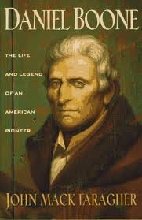

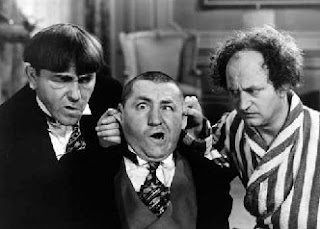
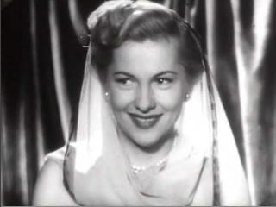
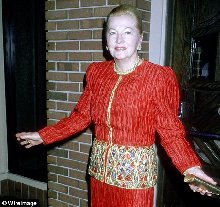



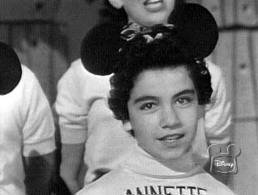






1 comment:
Good morning. I didn’t see what type it was but an owl served as today’s alarm.
A couple pie pumpkins are ready to be made into ???
Nuts- pecans are glazed and ready to top the salad to serve with Sunday Supper.
Post a Comment